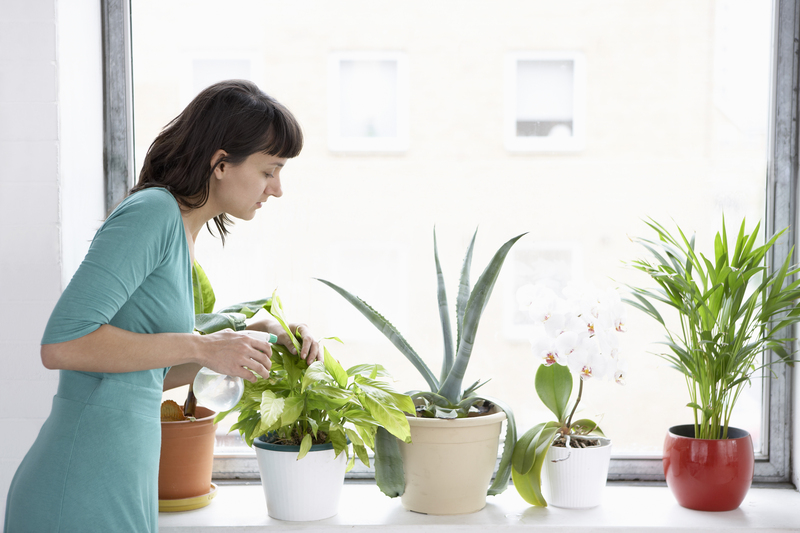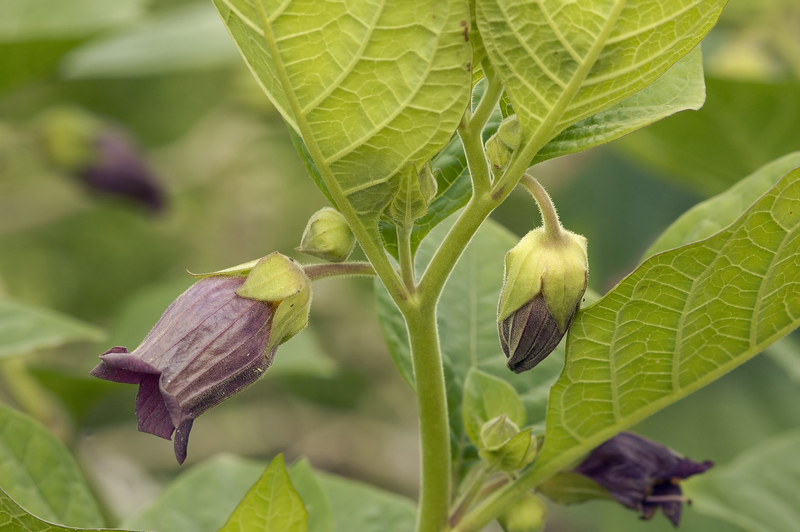Designing a Safe and Fun Garden for Kids
Posted on 22/08/2025
Designing a Safe and Fun Garden for Kids: A Comprehensive Guide
Creating a garden tailored for children combines creativity, safety, and playfulness. Whether you have a sprawling backyard or a small patch of green, a child-friendly garden encourages outdoor exploration and fosters a love for nature.
Why Design a Kid-Friendly Garden?
- Physical Activity: Outdoor play supports motor skills and keeps kids active.
- Educational Opportunities: Gardening introduces children to biology, ecology, and responsibility.
- Creativity and Imagination: A playful garden stimulates creativity through imaginative play.
- Connection with Nature: Kids become familiar with plants, insects, and the environment.
Key Principles for a Safe Children's Garden
When designing a safe and fun garden for children, it is vital to balance adventure with security. Here are core guidelines:
- Visibility: Always ensure adults have an unobstructed view of play areas.
- Safe Materials: Choose non-toxic, natural materials for pathways, equipment, and borders.
- Plant Selection: Only include non-poisonous, child-friendly plants.
- Age Appropriateness: Match features and play equipment to your child's age and abilities.
- Clear Boundaries: Use fences or hedges to define safe play areas, especially near water or driveways.
- Access Control: Lock away gardening tools, chemicals, and out-of-bounds areas.

Planning Your Safe Family Garden Space
1. Assessing Your Outdoor Area
Walk through your space and note potential hazards--sharp corners, thorny plants, steps, ponds, or uneven ground. Sketch a basic garden plan to visualize how to incorporate child-friendly zones while addressing safety concerns.
2. Defining Play Zones
Designing a fun children's garden means creating distinct zones for different activities. Consider:
- Active Play (e.g., swings, climbing frames, space for ball games)
- Creative Play (e.g., sandpits, mud kitchens, fairy gardens)
- Quiet Zones (e.g., reading nooks, hammocks, nature observation areas)
- Gardening Areas where kids can plant, dig, and tend to their plants
3. Traffic Flow and Pathways
Safe garden design for kids requires well-defined pathways. Wide, non-slip surfaces made with bark, grass, or rubber matting keep little feet safe and guide movement throughout the garden.
Child-Safe Landscaping and Plant Choice
1. Safe Plants for Kids
Always choose non-toxic, soft-leaved, and non-spiky plants for play zones.
- Edible Plants: Strawberries, cherry tomatoes, snap peas, nasturtiums, sunflowers
- Fragrant Plants: Lavender, mint, rosemary (but avoid excessive consumption)
- Colorful Flowers: Marigolds, pansies, calendulas, violets
- Grasses and Foliage: Ornamental grasses, lamb's ear (soft to touch)
Avoid plants such as foxglove, yew, lily of the valley, oleander, and others known to be poisonous.
2. Creating Sensory Experiences
Incorporate multisensory elements into your garden for children. Examples include:
- Sounds: Wind chimes, rustling grasses, water features
- Textures: Smooth stones, fuzzy leaves, bark, sand
- Scents: Plant herbs and fragrant flowers along walkways
- Tastes: A mini vegetable patch for sampling and snacking
Fun Features to Spark Imagination
1. Play Equipment
Select age-appropriate, safe play equipment for children's gardens:
- Swings, slides, and climbing frames with soft landings
- Sandbox or mud kitchen for tactile play
- Balance beams, stepping stones, or logs for agility
- Small playhouses, teepees, or dens for imaginative scenarios
2. Nature Exploration
Encourage nature study with:
- Bug hotels or insect observation areas
- Bird feeders or baths positioned out of easy reach but visible for birdwatching
- Pond or mini-water features (always supervised, shallow, or covered for safety)
- Magnifying glasses, seed collections, or nature journals
3. Creative Corners
Inspire creativity with spaces for painting, crafts, or performances:
- Outdoor chalkboards or easels
- Logs and stumps for seating or impromptu stages
- Fairy gardens or dinosaur dig boxes
- DIY stepping stone projects or painted pots
Garden Safety Essentials
Childproofing Outdoor Spaces
- Fencing and Gates: Install sturdy, secure fences with childproof gates to prevent wandering.
- Surface Coverings: Use soft, impact-absorbing materials like rubber mulch or bark under climbing equipment and swings.
- Tool & Chemical Storage: Lock all gardening tools, pesticides, and fertilizers in a shed or box that children cannot access.
- Water Safety: Fence or cover ponds and water features. Never leave young children unattended near water.
- Supervision: Always supervise toddlers and young children in the garden.
- Shade: Provide shaded areas with trees, pergolas, or sun sails to prevent sunburn.
- Pet Control: Keep pet litter and feeding areas separated from children's play and gardening zones.
Toxic Plants and Pests
Educate children never to eat unknown plants, berries, or fungi. Check your garden regularly for hazardous plants, mushrooms, or stinging insects and remove threats promptly.
Teaching Kids About Garden Safety and Nature
Hands-On Learning
Get kids involved in safe gardening through:
- Demonstrations: How to handle tools safely, proper handwashing, gentle handling of plants and insects
- Guided Tours: Regular garden walks to discuss plants, wildlife, and safety reminders
- Responsibility: Assign age-appropriate gardening tasks and explain the reasons for safety rules
- Respect: Teach kids to respect nature--no picking all the flowers, harming creatures, or trampling new sprouts
Low-Maintenance Solutions for Busy Families
Choosing Easy-Care Plants and Layouts
Select resilient, low-maintenance shrubs and perennials. Group plants by water needs and mulch well to reduce weeding. Install drip irrigation or rain barrels for hands-on environmental lessons and convenience.
Simple Upkeep Plans
- Establish a routine for watering, weeding, and harvesting with your children
- Keep garden tools lightweight and sized for little hands
- Regularly inspect equipment and play surfaces for wear
Sustainable and Eco-Friendly Kid Gardens
Creating a child-friendly garden can also nurture eco-consciousness:
- Composting bins help children learn about food waste and soil health
- Native plants support pollinators like bees and butterflies
- Water-saving techniques teach the value of conservation
- Wildlife habitats introduce children to local biodiversity
Design Inspiration: Popular Themes and Ideas
Enchanted Forest Garden
- Mossy logs, fairy doors, toadstool seats, and winding paths for magical play
- Shade-loving plants and hanging decorations for atmosphere
Edible Wonderland
- Fruit bushes, raised vegetable beds, vertical pallet gardens
- Trellised beans, snack trails with cherry tomatoes and sugar snap peas
Mini Adventure Park
- Natural climbing features, crawl tunnels, and obstacle courses
- Secret hideouts and exploratory nooks
Maintenance Tips to Keep Your Kids' Garden Safe and Inviting
- Conduct regular safety checks on equipment, plants, and boundaries
- Refresh mulch, repair any minor damage, and remove hazards quickly
- Change up features and add new activities as your children grow
- Solicit feedback from your kids on what they'd like improved or added

Frequently Asked Questions
- How do I make a garden safe for toddlers?
Use soft surfaces, fence off hazards, keep equipment age-appropriate, remove toxic plants, and always supervise. - What are the best plants for a kid-friendly garden?
Edible options like strawberries, cherry tomatoes, and snap peas, fragrant herbs, colorful but non-toxic flowers. - How do I involve my child in garden care?
Assign simple jobs--watering, weeding, harvesting--and encourage observation and inquiry for ongoing engagement.
Conclusion: Growing Joy and Discovery in Your Backyard
Designing a safe and fun garden for children is more than just minimizing hazards--it is about creating a living space where kids can thrive, learn, and play. By thoughtfully combining safety with adventure, parents can nurture both the health and imagination of their children. Child-friendly garden designs invite families outdoors, inspire creativity, and foster a lifelong respect for nature.
With careful planning, regular maintenance, and a little creativity, your family's garden can become a cherished playground and a growing laboratory for endless childhood memories.



